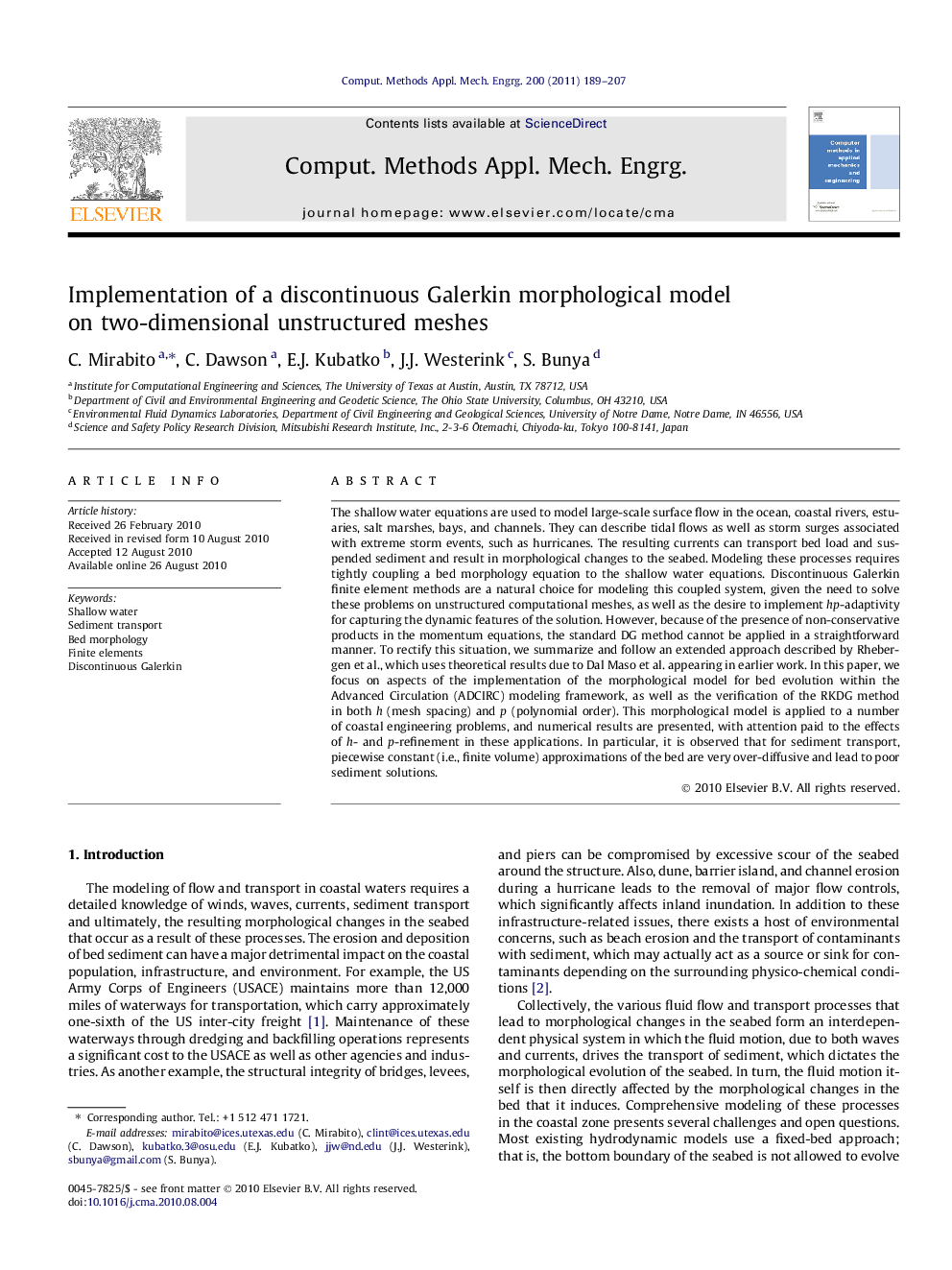| Article ID | Journal | Published Year | Pages | File Type |
|---|---|---|---|---|
| 498789 | Computer Methods in Applied Mechanics and Engineering | 2011 | 19 Pages |
The shallow water equations are used to model large-scale surface flow in the ocean, coastal rivers, estuaries, salt marshes, bays, and channels. They can describe tidal flows as well as storm surges associated with extreme storm events, such as hurricanes. The resulting currents can transport bed load and suspended sediment and result in morphological changes to the seabed. Modeling these processes requires tightly coupling a bed morphology equation to the shallow water equations. Discontinuous Galerkin finite element methods are a natural choice for modeling this coupled system, given the need to solve these problems on unstructured computational meshes, as well as the desire to implement hp-adaptivity for capturing the dynamic features of the solution. However, because of the presence of non-conservative products in the momentum equations, the standard DG method cannot be applied in a straightforward manner. To rectify this situation, we summarize and follow an extended approach described by Rhebergen et al., which uses theoretical results due to Dal Maso et al. appearing in earlier work. In this paper, we focus on aspects of the implementation of the morphological model for bed evolution within the Advanced Circulation (ADCIRC) modeling framework, as well as the verification of the RKDG method in both h (mesh spacing) and p (polynomial order). This morphological model is applied to a number of coastal engineering problems, and numerical results are presented, with attention paid to the effects of h- and p-refinement in these applications. In particular, it is observed that for sediment transport, piecewise constant (i.e., finite volume) approximations of the bed are very over-diffusive and lead to poor sediment solutions.
